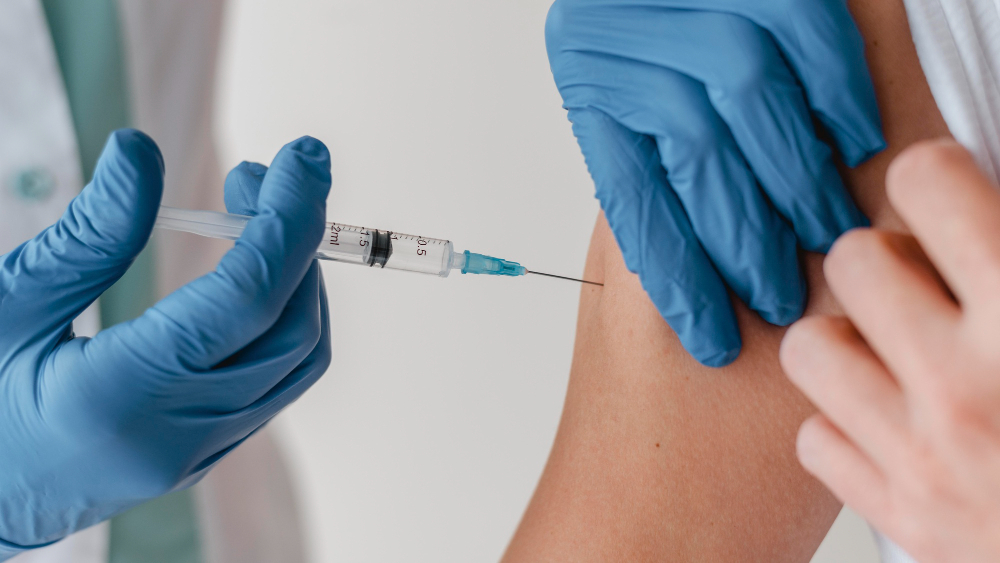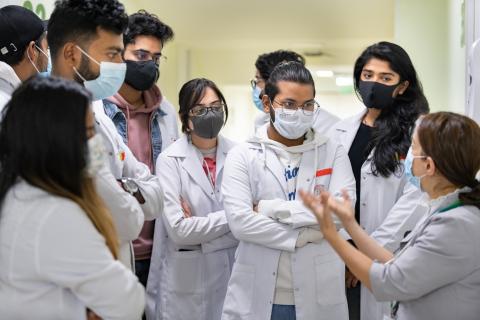WHO estimates impact of vaccines in reducing deaths from antimicrobial resistance
Antimicrobial resistance caused around 5 million deaths worldwide in 2019. The use of vaccines has the potential to reduce these deaths - 515,000 fewer deaths per year - according to a report published by the WHO. The work focused on 24 pathogens and 44 vaccines, licensed by regulatory agencies, in clinical development or in development. By counting existing vaccines alone, antibiotic use could be reduced by 142 million daily doses per year.

Gómez Rial - vacunas antimicrobianos EN
José Gómez Rial
Head of the Immunology Department at the Complejo Hospitalario Universitario de Santiago de Compostela (CHUS), Servicio Gallego de Salud (SERGAS)
This WHO report on the impact of vaccines on the reduction of antimicrobial resistance highlights several important key points.
First, the crucial role of vaccines in preventing infections. By preventing primary infections, vaccines reduce the need for antimicrobial treatment, which reduces the selective pressure on resistance development. It is estimated that current vaccines can reduce daily antibiotic use by 142 million daily doses each year, and vaccines in development could reduce it by as much as 1.9 billion. This is critical in order to achieve less exposure to antibiotics and therefore less selection of resistant bacteria.
The report emphasises the need to integrate these antibiotic use reduction metrics into clinical trials of new vaccines. This is key to ensuring that new vaccines are not only evaluated for their efficacy and immunogenicity, but also for their impact on reducing antimicrobial resistance. It is also recommended that global immunisation programmes explicitly include the reduction of antimicrobial resistance as one of their objectives, reinforcing the importance of vaccines as a key public health strategy.
Vaccines represent a powerful tool both for disease prevention and for mitigating one of the greatest public health challenges of the 21st century, antimicrobial resistance. It is the so-called ‘silent pandemic’ of this century, as it does not have the immediate visibility of a viral pandemic such as covid-19 but is causing an increasing number of deaths and complications worldwide. According to WHO's own data, antimicrobial resistance caused five million deaths worldwide in 2019 and this figure is expected to rise dramatically in the coming decades if urgent action is not taken.
Ángel Hérnandez - vacunas OMS EN
Ángel Hernández Merino
Pediatrician and collaborator of the Advisory Committee on Vaccines, the Spanish Association of Pediatrics and the Spanish Association of Primary Care Pediatrics
This is a major study in which several groups and advisory committees have collaborated, with many experts in different areas in each of them. The aim is to build in a multi-focal strategy to combat antimicrobial resistance (AMR). This is a phenomenon that has a huge impact on health (illness, disability and reduced quality of life, and deaths) and on the resulting social and economic costs. RBA is also an emerging and growing phenomenon, threatening the stability and quality of life of populations. It is therefore a major public health problem and challenge.
The report published by WHO addresses the role of vaccines in containing and reducing RBA. It focuses on 24 pathogens (bacteria and viruses) and 44 vaccines (some already in use and others in various stages of research). A previous study, from 2019, had estimated that about five million lives were lost each year attributable to RBA and that vaccines would have the potential to prevent 10% of these deaths (approximately half a million each year).
The current WHO analysis estimates that vaccines already in use could avert about 106,000 deaths (with appreciable improvements if coverage is increased); vaccines in advanced stages of clinical research could avert about 135,000 deaths; and those in early stages of research could avert a further 408,000. The effect of vaccinations on other health and economic impacts of RBAs are also very relevant. The published study also includes a detailed analysis of the estimates for each pathogen, its available or investigational vaccines and WHO regions.
Following these results, the WHO concludes that these considerations should be an integral part of RBA control strategies and should seek to maximise impact by introducing vaccines and expanding vaccine coverage where needed; should be included in cost-effectiveness analyses of vaccine programmes; and should be part of the (secondary) objectives of research trials for new vaccines.
While the potential impact of vaccines on ABR and its consequences is considerable according to the published WHO analysis, some limitations can be noted. The results presented are derived from predictions based on static models which, in the real world, however, may vary according to geographic location and time. The analysis assumes moderate to high vaccination coverage and outreach, which may overestimate the results, and does not include the effects of vaccination campaigns outside of core vaccination programmes, which may underestimate the results in this case. With respect to investigational vaccines, it should be noted that there remains a high level of uncertainty about the final outcome of the research and its potential role in reducing ABRs.
The mechanisms of the impact of vaccines on the complex phenomenon of ABRs and their direct and indirect effects are not yet well understood. There is a need to improve knowledge on these aspects.
In any case, and this could be one of the most important conclusions, these questions on the role of vaccines in reducing ABRs should be included in studies and evaluations of approved vaccines in use or with the prospect of introduction in immunisation programmes or under investigation. This should be done in synchronisation with the other actions envisaged in strategies to combat antimicrobial resistance.



